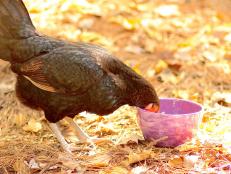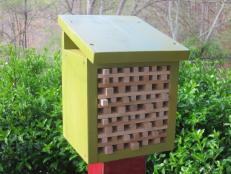Why Chickens Roost


Photo by Mick Telkamp
A roost is an elevated bar, branch or narrow plank on which chickens perch to sleep. Seeking high spots to spend the night has been part of chicken survival instincts since long before its domestication over 5000 years ago. Chickens aren’t all that fast, they lack the prowess to ward off many predators and they are sound sleepers. It’s no wonder an inclination to sleep out of reach is an instinct that has lingered even in a time when much of the world’s 19 billion strong chicken population is housed in predator-proof facilities. For the backyard chicken keeper, it turns out encouraging chickens to high roosts still makes a lot of sense.
In most coops, chicken keepers will notice an effort by birds to find the highest stable location to perch for the night. If space is limited, pecking order will kick in and alpha chickens will usually end up on top. In coops without appropriate roosts, chickens may choose to sleep in nesting boxes. Although sleeping in nests may seem natural, it should be quickly discouraged to prevent excessive soiling of nests, which can discourage their use for egg laying. When chickens spend non-laying time in nesting boxes, egg eating is also a concern. Lack of adequate roosting space can also lead to chickens sleeping on the ground, which increases health risks as birds are more prone to contact with parasites and bacteria.
Roosting bars are recommended in any coop for the comfort and safety of the flock. Knowing what to do (and what not to do) when establishing roosts for your backyard chickens will help keep birds healthy and comfortable as they settle in for the night.
Roost placement should be safe, sanitary and convenient. Do not block entrances or place directly on front of ventilation points that might pose frostbite concerns in winter months. Also stay clear of nesting boxes, feeders and waterers. Chicken dropping will quickly soil anything positioned below.
Select materials that will allow for the surest footing. Sturdy branches are functional, appealing to chickens and add rustic style to the coop, but rubberized poles or lumber may also be used (two-by-fours work well). Roosts should be 2” to 5” in diameter, stable and easy to clean. Avoid using metals or plastics that can be slippery. A slippery or unstable roost can lead to bumblefoot or other infections due to lesions that can develop on chickens’ feet as they struggle to remain on unsteady perches.
Bar length will vary by flock size, but plan for approximately ten inches of roosting space per chicken (although they are likely to perch close together for stability and warmth). Less space may be needed for bantam breeds, but allow enough to avoid competition for roosting room. If mounting multiple roosting bars vertically, stagger their placement to avoid soiling issues.
Set the bar high. Chickens left outside will often seek high branches to avoid predators and may perch 40 feet or higher in treetops. Inside a coop, place roosts eighteen inches or higher from the ground. Some breeds are better able to reach higher roosts and mounts may be placed as close as eighteen inches from the ceiling of the coop for larger or more agile breeds. Because chickens seek the highest at perch to slumber, roosts should be placed higher than nesting boxes to best appeal to roosting chickens.
When new roosts are added to an existing coop, it can take a while for chickens to break old roosting habits. To speed the process, chickens may be moved to the roosts by hand after dusk for a few nights until they have adjusted to the new accommodations.
When raising baby chicks, providing a small roosting bar within the brooder will help to encourage roosting habits that will carry over when juvenile chickens are moved into the coop.













































